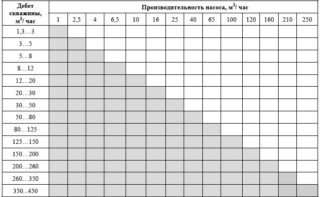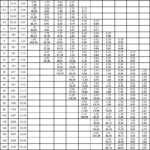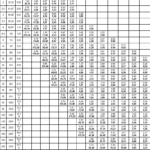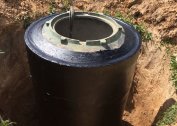To organize an autonomous water supply system and possibly drainage in a country house requires the installation of a pumping station or a submersible, surface pump. So that, due to technical limitations, the equipment can satisfy all the needs of homeowners, it is necessary to correctly calculate the capacity of a submersible pump for a well. In this case, the technical features of the water well, the volume of the consumed resource and the remoteness are always taken into account.
Why do we need to calculate the performance of a pump for water supply
Do not underestimate the importance of pre-calculating the required power and performance of pumping equipment. If we neglect it, in the end, due to the technical limitations of the pump, it will not be possible to establish uninterrupted operation of autonomous water supply, as well as to provide a comfortable water intake.
Insufficient pumping equipment will start up more often than expected, which will lead to overheating of the engine and rapid disabling. If we talk about heavy duty water pumps, the situation is similar. The equipment will work “idle” most of the time, which will lead to overheating of the engine and rapid wear of parts.
In order to qualitatively organize a water supply system in your personal plot, you need to familiarize yourself with the following information:
- Pumps are divided into several varieties: in the form of stations, deep and surface. To choose the appropriate option in a particular case, you need to familiarize yourself with the features of each.
- Surface equipment is designed to work without immersion in a humid environment, has an acceptable cost in comparison with analogues. Recommended for water intake from a depth of not more than 12 meters.
- Deep pumps are in demand because they have proved to be powerful, productive and reliable, they effectively clean well water from impurities of sand, silt and other contaminants. They are divided into centrifugal and screw, the latter are used not only at home, but also in open water.
When choosing equipment, it is impermissible to save on its power, because otherwise the autonomous network will not be able to qualitatively wash the cleaning filters. It is also important to consider that many manufacturers indicate in the technical data sheets not the nominal (working) parameters, but the maximum characteristics. It is better to rely only on operating parameters, so that productivity and power are normal.
Before proceeding to the calculations, you need to take care of the quality and throughput of the pipes. A pipeline is made of polypropylene or metal. The first are more in demand due to their affordable cost and lightness, the disadvantage is low resistance to pressure drops in the system.
What to consider
When providing uninterrupted water supply to a country house, it is important to accurately determine the parameters of water pumps. If an error is made in the calculations of the required capacity, the intake equipment will pump out an insufficient amount of water - this will inevitably lead to the need to purchase a new pump, and this is an additional cost.
When calculating the performance of a water electric pump, it is important to consider the following parameters of the water main and tank:
-
- Depth of source. To determine the flow rate, it is important to know the depth of the bottom.From a practical point of view, these parameters will make it possible to optimally select a pump with the required immersion depth and lift height.
- Knowledge of the static level of the well. This is the interval between the water mirror and the surface. Allows you to set the lifting height of the water column, as well as the immersion depth of the pump. This parameter is calculated in the absence of complete water intake and the well is at rest for several hours, or better, a day. Depending on the season, the parameter changes and falls during the spring flood, therefore, calculations are best done in the summer in dry and warm weather.
- Dynamic level - the interval between the water mirror and the surface when the equipment is on. This parameter allows you to choose the right submersible pump, since it displays the necessary depth of immersion.
- Volume of consumption. The calculation is based on the number of people living in the house, as well as the performance of the autonomous station. It is calculated by special plumbing fixtures, as well as when using a calculator for water intake of household appliances. It is important to know that consumption should not exceed well production.
- The diameter of the shaft of the well. This indicator affects the size of the selected pump. In shallow and narrow Abyssinian springs there is no possibility to install deep pumps, the liquid is lifted by surface units with a water pipe being lowered into the shaft. The diameter of standard deep-seated centrifugal pumps reaches 4 inches. Designed for sources with a diameter of at least 100 mm.
- The distance from home to the well. When calculating, it is important not to forget to convert vertical meters to horizontal. This ratio depends on the pipe material and its diameter, which affects the hydraulic resistance.
An important criterion is the quality of well water. It varies depending on the type of source. The cleanest water is recognized from artesian wells.
Abyssinian wells have a depth of water layer of not more than 8 meters, as a result, the suction holes of the equipment are located in the thickness of the water layer. Deeper sand varieties have a clay or sand bottom. In the first and second cases, in order to avoid clogging of the filters, screw or centrifugal deep pumps equipped with special treatment filters are used.
How to calculate pump power for a well
To calculate the required power, you must first use the formula for calculating the pressure. It has the following form: H (tr) = H (geo) + H (loss) + H (freedom), where:
- N (tr) - the desired parameter for pumping equipment;
- N (geo) - the length of the horizontal section and the depth of rise;
- N (loss) - the sum of the losses in the water supply network, is set according to the tables — these losses are caused by the friction of the liquid on the surface of the pipeline, as well as the decrease in speed in the sections, the tees and elbows are more gently;
- N (freedom) - the pressure that is required to create working pressure in the system. This value ranges from 15 to 30 meters.
- Pressure losses in steel pipelines. The upper values are the flow velocity in m / s; the lower values are the pressure loss in meters per 100 m of the straight pipe
- Loss of pressure in plastic pipes. The upper values are the flow velocity in m / s; the lower values are the pressure loss in meters per 100 m of the straight pipe
When choosing a water pump, the most important parameters are the height of the water column and productivity. To calculate the latter, the pressure value is multiplied by the number of people living in the house.
It is better to give preference to water pumps equipped with automation. If the engine overheats during operation, the system will automatically turn it off.








